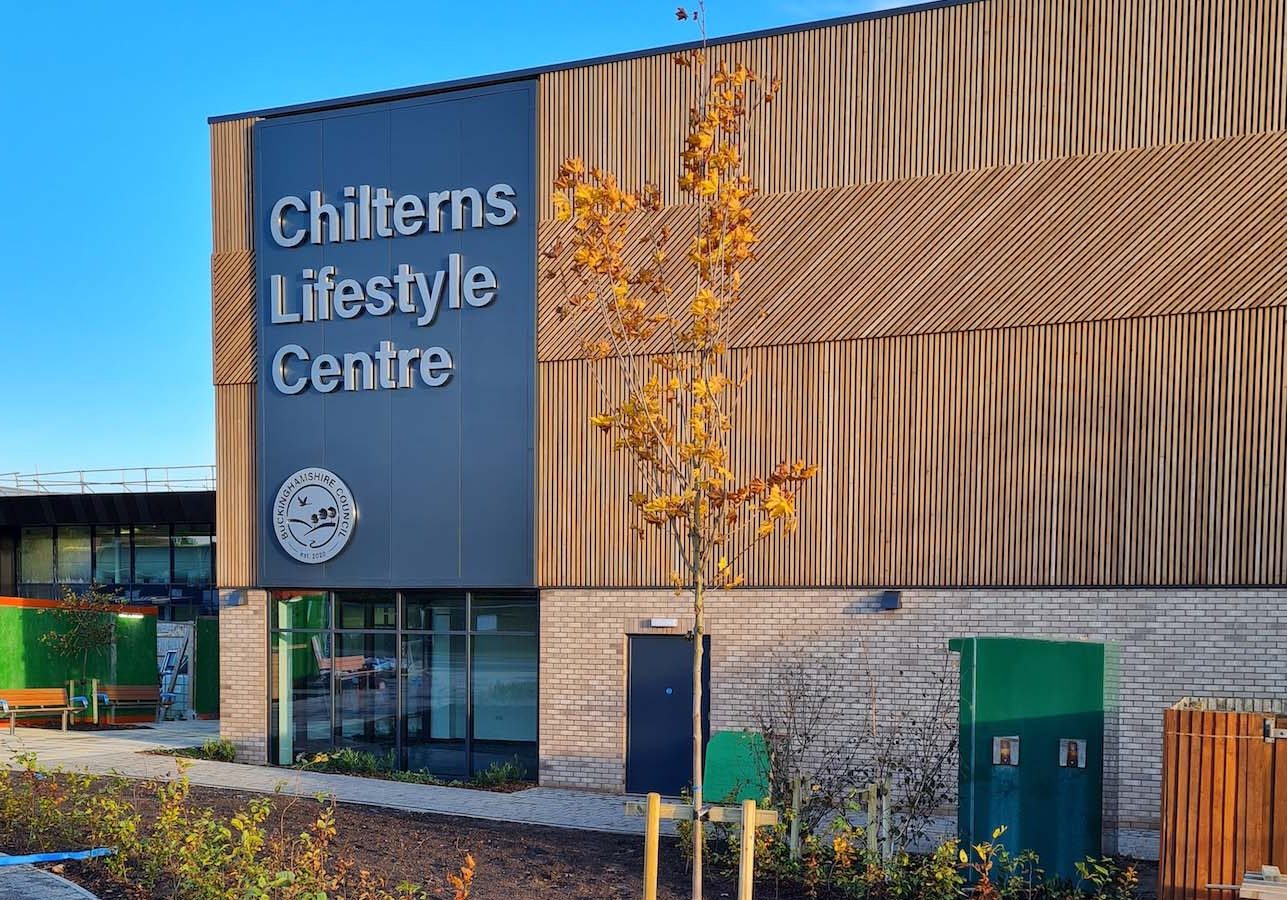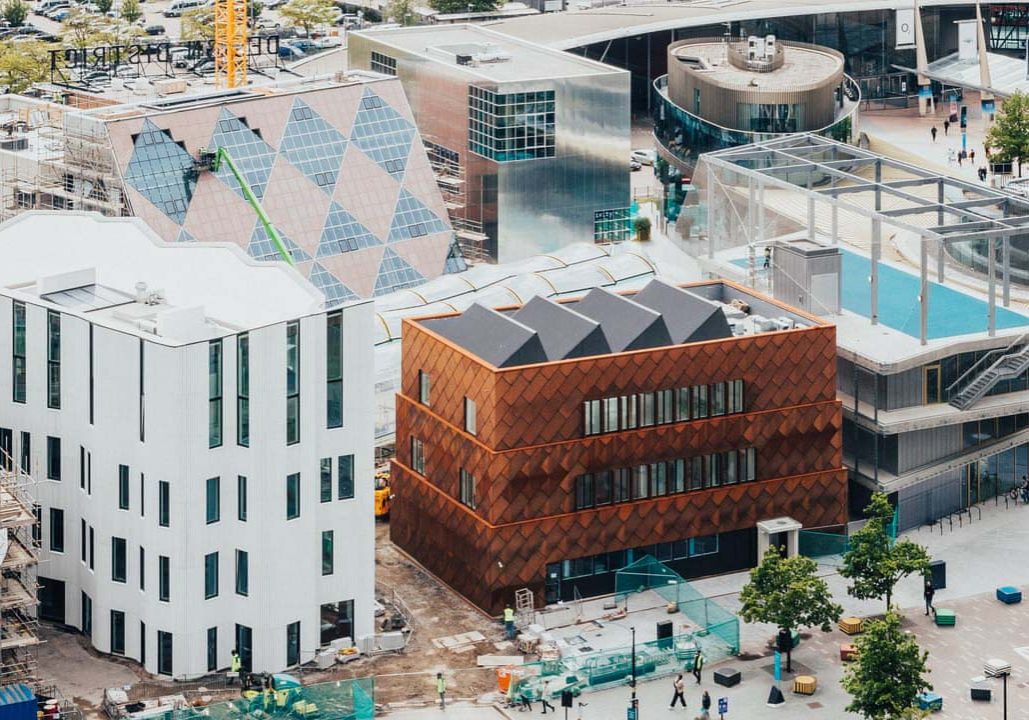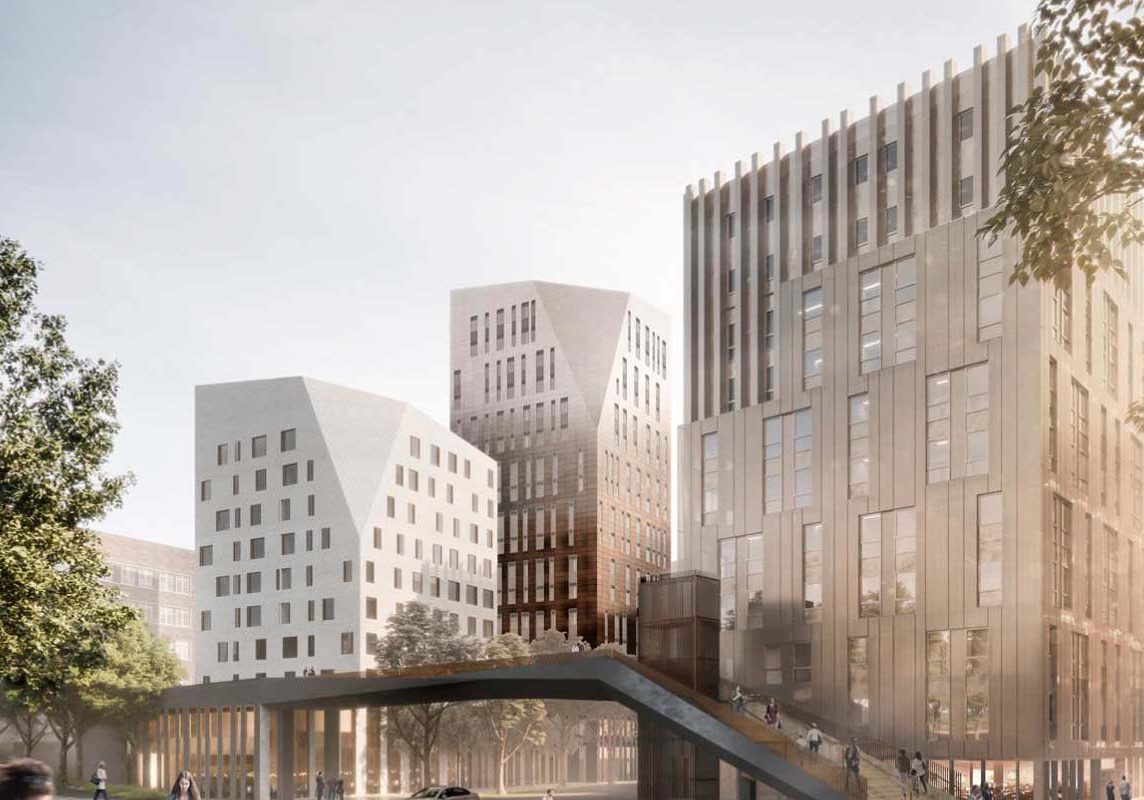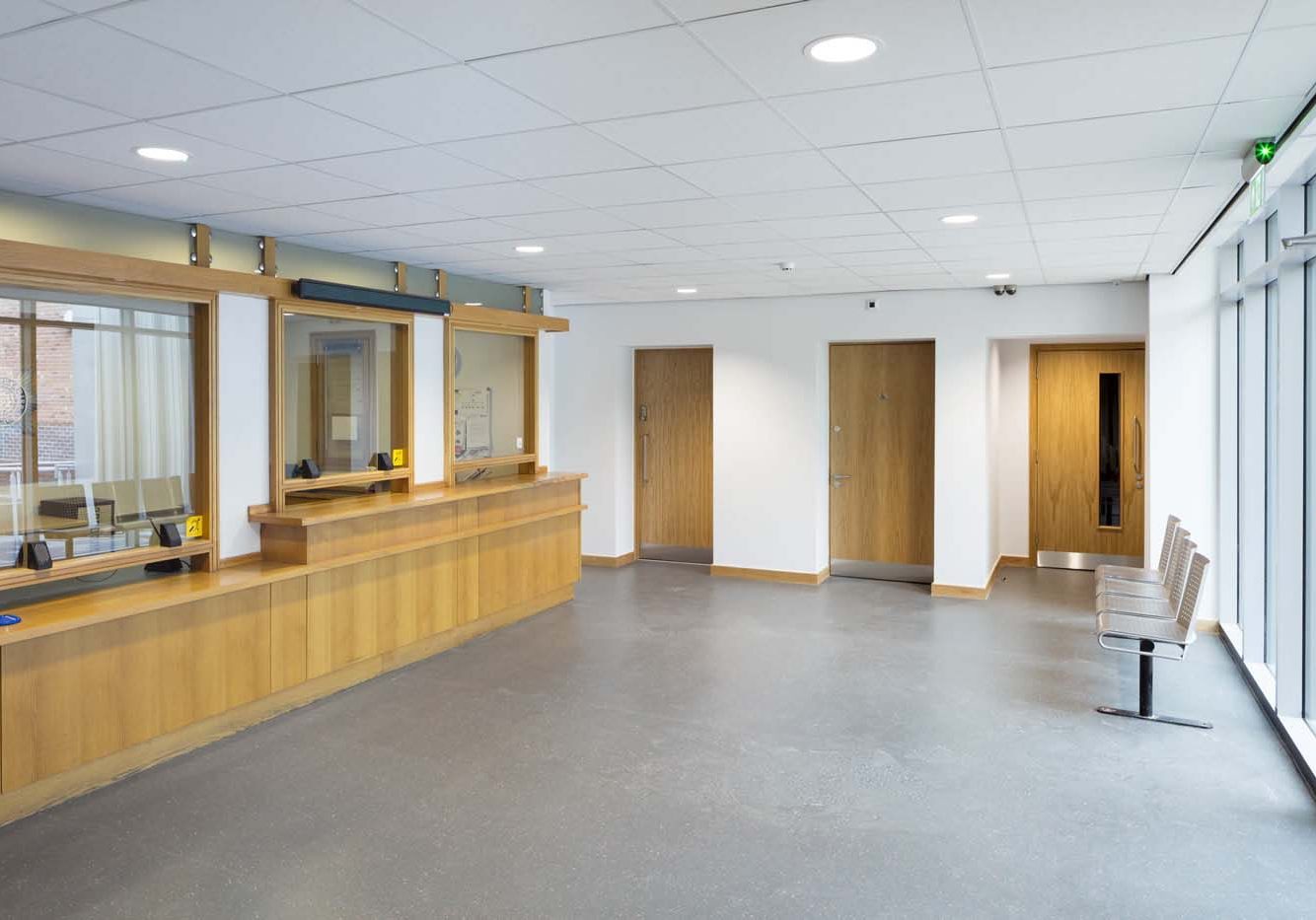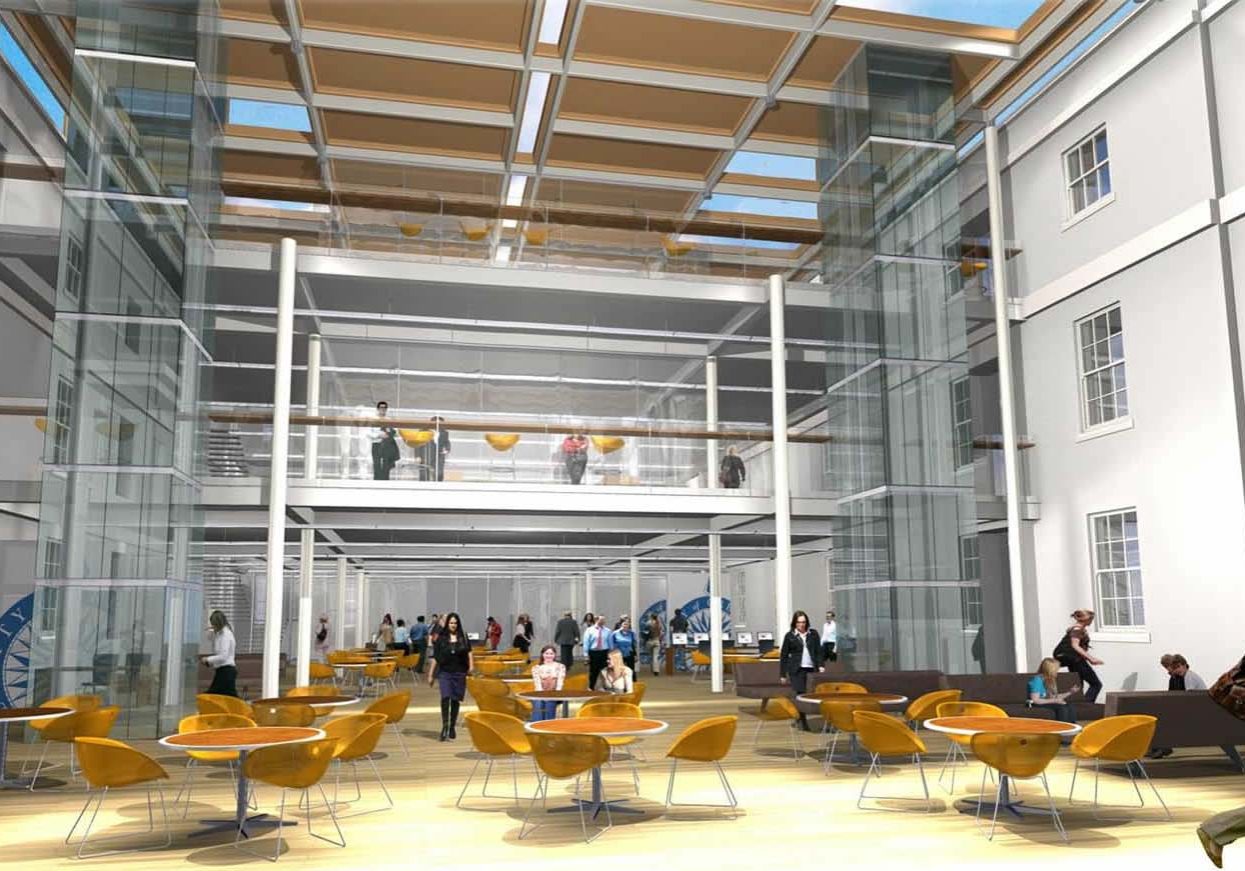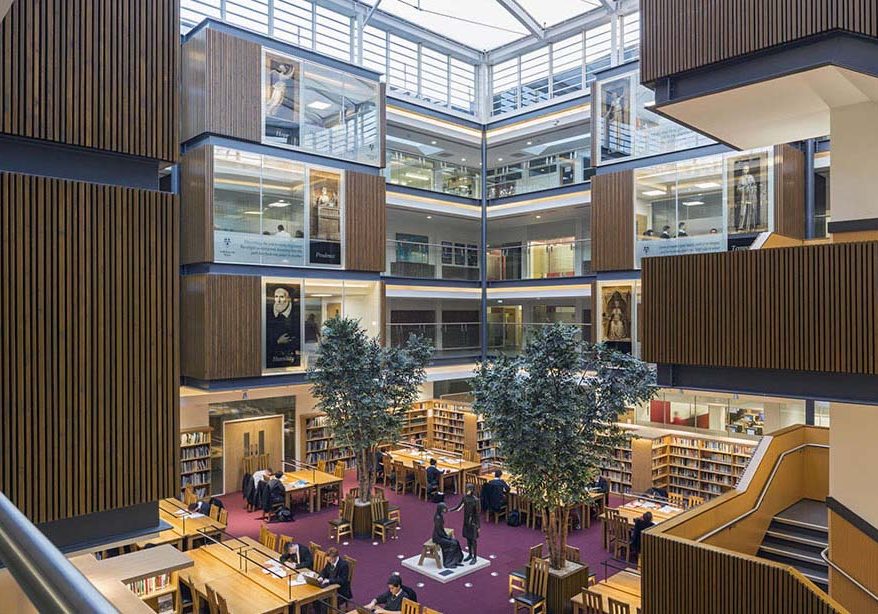University of Warwick, Acoustics
Location University of Warwick, The Oculus Building
Architect Berman Guedes Stretton
Contractor Willmott Dixon Construction
Completed 2016
Value £19m
The Oculus building is the first interdisciplinary structure completely dedicated for teaching and learning at the University of Warwick. The building comprises two large lecture theatres (500 and 250 seats), a total of 12 teaching spaces, open plan break out spaces and a main entrance/central atrium.
The name Oculus derives from the Latin meaning “eye”, the name was chosen due to resemble of an eye and also for the natural light that the building receive across the double height atrium. The particularity of this project is the inclusion of one large lecture theatre (500 seats), an open plan area under a “state of the art.” wooden roof. The design of the double height atrium which is open to the open plan learning space is also a particularity of this project. Under these architecture singularities the control of reverberation time was a relevant factor during the whole design process. In order to provide acceptable levels of reverberation time in “key” spaces using the most cost-effective solution, we worked closely with the architect and main contractor. Another important aspect of this project was to provide acceptable levels of sound insulation between teaching spaces and acceptable levels of Speech Transmission Index in the open plan space.
The first floor contains four learning spaces and a small lecture theatre (250 seats), the main entrance (foyer) is a two height space which is connected by stairs to the second floor where one open plan learning space is located. The second floor contains eight learning spaces and the large lecture theatre (500 seats). The timber roof is over the main entrance (foyer), and the open plan learning space. It was considered that BB93 will be the relevant acoustic guidelines which should be applicable to this project, therefore the sound insulation performances between partition (horizontal and vertical), reverberation time, indoor ambient noise levels and STI recommendations were extracted from this document.
An important concept during the design was the use of the natural light, the light penetrates the building across a double height glazed window located at the front and at the rear of the building and into the learning spaces by a full height glazed window. Internally, the state of the art wooden roof gives a special character to this building. These special peculiarities created different acoustic challenges which were solved during different stages of the design process.
Other important consideration during the design process was the integration of the building within its natural surroundings, the use of materials such as terracotta, sandstone cladding, terrazzo tiles, and a wooden roof were the solution to facilitate this integration, these also contributed to cutting the embodied carbon of the building.
Internally, the singularity of the different rooms such as the lecture theatre with 500 seats, which is the largest in the university, presented different complexities from the acoustic point of view. The main challenges that we faced during the design process was to provide high levels of acoustic comfort without treating the roof acoustically, this challenge also arose in the atrium and the open plan learning space.
The first acoustic challenge to be resolved was to create an appropriate acoustic environment into the large lecture theatre where the wooden roof was to be exposed and free of acoustic materials. In order to generate multiple acoustic scenarios to the design team, different acoustic models were created using the ODEON 13 room acoustic software. The acoustic modelling consisted of a different combination of acoustic materials which were positioned on side walls and front and back walls. The final solution consisted of a combination of acoustic panels (fabric finish), timber acoustic panels and timber panels. The modelling included the minimum separation at which the timber battens should be positioned in order to provide the necessary acoustic absorption, the timber acoustic panels and timber panel was constructed on site by the contractor.
The small lecture theatre did not present such an acoustic challenge as the design of the large lecture theatre presented. Similar to the large theatre different acoustic modelling were submitted to the design team. The final solution also consisted of a combination of acoustic panels, acoustic timer panels and timber panels. The second most challenging area of this project was the open plan learning space located on the second level, which is positioned at the core of the building. Also, different solutions were presented to the design team. The solution to control the reverberation time and to provide good levels of STI was to use the underside of the large theatre to create a curved wall. This curved wall was treated acoustically with timber acoustic panels, which were also constructed on site by the main contractor.
The reverberation time in the 12 teaching rooms were controlled using a combination of a carpet finish and suspended acoustic raft (perforated plasterboard with mineral wool backing), the area of the perforated plasterboard was different in each of the different teaching spaces (the capacity of each teaching space varies from 30 persons to 100 persons). Each room was modelled using ODEON v 13 in order to evaluate the area of acoustic rafts required.
Separating partitions on the first floor were embedded within the structural columns of the building. Therefore, flanking noise was an important factor which had the potential to compromise the acoustic performance of the walls and also to affect the acoustic privacy between the teaching spaces. Specific details were provided to the design team and preliminary sound tests were completed in order to evaluate our proposal. The airborne sound tests were extremely satisfactory with results above the BB93 performance standards for airborne sound insulation between teaching spaces.
Corridor walls within the teaching rooms, which are linked to the open plan learning space, included extensive areas of glazing. These areas were also considered in order to reduce the noise disturbance between the users of each space.
The completion testing results showed compliance in excess with the acoustic recommendations included within the relevant acoustic guidelines and BB93.

